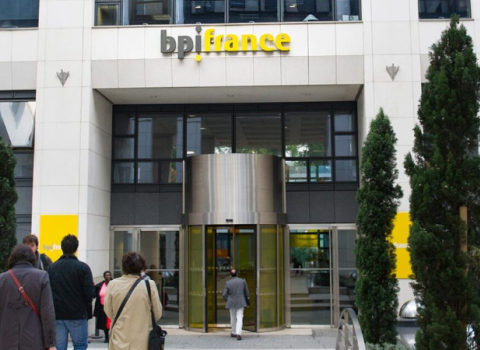
Weighing conflicting views of the outlook for European biotechnology was the object of a conference 13 June at the Karolinska Institutet in Stockholm.
As the saying goes, everything is relative.
After four years of painful retrenchment and restructuring, Europe’s biotechnology sector staged a comeback in 2005 – and so far in 2006, the recovery has continued. A recent Ernst & Young report found industry revenues up 17 per cent in 2005, and market valuation up 26 per cent. Among the reasons: a growing appetite among angel investors, and the neediness of cash-rich and product-light pharmaceutical companies.
So the European industry’s outlook is relatively sparkly when seen from the perspective of the dark days and nights that followed the technology bust of 2000. But that is not to say that establishing and growing a biotechnology company is now the equivalent of taking the rough diamond of research and merely chipping away to bring out its lustre and value. Relative to software, say, the biotech development cycle remains long and expensive, and far, far riskier. Financing remains difficult, losses high, failures frequent.
Weighing these conflicting views of the market outlook was the object of a conference 13 June at the Karolinska Institutet in Stockholm. It was an invitation-only discussion, among 43 participants from industry, finance and academia, organised by Science|Business, Karolinska and its Unit for Bioentrepreneurship and Stockholm BioRegion, with support from TVM Capital, a Munich- and Boston-based venture capital firm that’s a big biotech investor.
The industry outlook, by consensus of many participants: good for good companies. In a show of hands, a majority expressed optimism that the market will keep growing. “Good projects always get financed; the lacklustre will continue to struggle,” said Alan Warrander, senior vice president for life sciences at Edinburgh consultancy and business analysis firm Wood MacKenzie. A selection of other views at the conference follows.
Early-stage funding – angels, VCs and pharma
Business angels are an increasingly important source of early-stage funding, according to Conny Bogentoft, CEO of Karolinska Development, the university’s investment manager. “Six years ago there was no capital for early stage research. Now we have raised $100 million, mainly from rich private investors.” (Shortly after the conference, Karolinska Development announced it raised an additional SEK 318 million, or about €35 million, for its second development fund.)
And making money is not the only motivation, said investment manager Karin Hehenberger of Scandinavian Life Science Venture. “Often these are people who want to put money into research that affects them directly. We often see individuals who invest a substantial amount of capital in companies focused on finding remedies for diseases that affect them or their families directly.”
But start-up companies are still facing a funding gap. Following the recession, venture capital investors are no longer interested in small rounds, which swallow just as much management time as larger fundings. This makes it very difficult for companies looking for between €1 million and €3 million, that could reasonably have expected to find venture capital backers in the late 1990s.
And in the main big pharma is fishing for drugs in late-stage development. There are some honourable exceptions - such as US biotech Genentech’s investment in PIramed of the UK, a company whose pipeline is still in preclinical development. Indeed, the holes in their late-stage clinical development pipelines are so large that pharma companies are becoming desperate. And there is a mutual dependency, with biotech needing the development and marketing engines of the pharmaceutical machines to achieve the full value of their products. “For early stage research companies partnering with pharmaceutical companies is absolutely essential,” said Joern Aldag, CEO of Evotec AG, a large German biotech company.
From pharma to marketing
The logical conclusion is a new division of labour: innovative and nimble biotechs will come up with blockbuster and life-enhancing compounds that pharma will put through its expensively acquired clinical development and marketing channels. “Ten years from now pharmaceutical companies may be distribution engines only,” said Aldag of Evotec. This offers huge opportunities for biotech and research-driven companies.
Anders Ullman, research director at the Swedish biotech company Biovitrum, agreed that more and more drugs will originate in small companies or academic groups. “In ten years’ time we will see big pharma companies that have no in-house discovery engine,” he said. Small and medium-sized companies need to develop compounds to Phase II proof-of-concept and to be flexible in targets – “then it is a matter of joining with someone with marketing muscle,” he said.
All of which begs the question: Why does big pharma bother doing its own research? “Because our research is still very strong,” replied Hans Boström, Director, Scientific Liaison at Merck Sharp & Dohme . “As long as the in-house research is superior it will get more investment. But if research outside is better, we’ll go there. It’s all about quality,” he said.
Christoph Schröder, venture partner of TVM Capital’s Life Sciences group, pointed to an interesting hybrid model: GlaxoSmithKline recently set up its own centre of excellence for external drug development, which operates as an independent evaluation body completely separate from the company’s in-house research, before “the best of both worlds” enters GSK’s development engine room.
Volatility on the exchanges
Enticing private investors into biotech depends on the availability of exits. In the pre-bust model, that meant floating on a stock exchange. Although 2005 saw more IPOs, stock exchanges remain fickle in their attitude to biotechs.
Stefan Wikholm, an analyst at Swedish bank Nordea, said the level of interest in biotech stocks can be read in kronor, euros and cents. “The very high volatility we have seen recently in stock markets comes from an uncertain future,” said Wikholm. “It is not untypical for biotechs to lose 20 to 30 per cent in volatile markets, double the sort of loss experienced by very large liquid stocks. However, the performance of the biotech companies has not changed. It is only a matter of sentiment, of risk aversion.”
In the face of swirling sentiment Frank Teneberg, head of issuer sales at Stockholm Stock Exchange, advised investors to look to the home market for their IPO: “Foreigners jump ship when things go wrong.” There was no need, he said, for Scandinavian companies to IPO abroad. “Most stock exchanges have excellent connections to the bigger pools of investment, in London, Frankfurt and so on.”
Many European biotechs are attracted by the apparently easier ride on Nasdaq. But Hehenberger of Scandinavian Life Sciences noted it is both difficult and expensive to get a listing on the US tech market. “The big problem is the pricing, because the company is not making any money, and won’t for another five or ten years.”
And Nick Adams, director of business development at UK biotech Antisoma, had a warning: “European companies face a different set of challenges when looking to raise money in the US. I never came across a European company that had a successful listing on Nasdaq. You are not an American company, and the Americans have lots of other choices of where to put their money.”
The urge to merge
Anders Brahme, an entrepreneur and Karolinska professor, argued that despite four years of consolidation, the key structural problem for European biotechnology is that it is too fragmented. As a result many CEOs spend 70 to 80 per cent of their time chasing money instead of focusing on value-adding targets.
But mergers are no solution, argued Trine Bartholdy from Væxtfonden, Copenhagen. “We have had mergers where one company had the money and the other the technology. But it took three to five years to get over the turmoil of merging.”
“As a wise man from Denmark once said: You don’t get an eagle by merging two chickens.”





 A unique international forum for public research organisations and companies to connect their external engagement with strategic interests around their R&D system.
A unique international forum for public research organisations and companies to connect their external engagement with strategic interests around their R&D system.